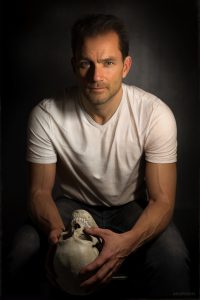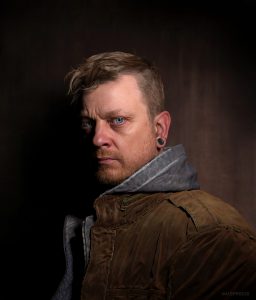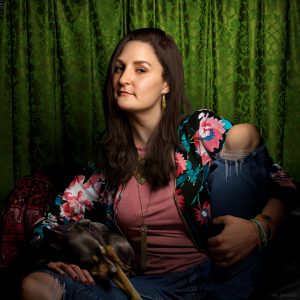
Ian Spriggs: The Digital Artist We Should All Watch Out For
Once your eyes get a hold of Mr. Ian Spriggs’s works, prying them away from it would prove to be an impossible task. His works are close to being hyper-realistic that one would question if it’s done through old school medium, digital means or are mere photographs.
But no. These are true labors of love as honed through talent and technical skills. It is a marriage of these disciplines and we couldn’t see any divorce in the cards. When asked about what things he had to learn to become the 3D artist that he is today, Mr. Spriggs articulates:
…You cannot simply expect that the tools can turn you into a good artist, you need to build yourself up.
When you get thrown into the industry, you realize creativity isn’t just about creating content, it is about developing the technical too… As an artist you don’t want to worry about the technical, but in this industry you will fall behind if you don’t try to learn both.
Such are the words of the wise and are definitely, impressively true. It is with honor that Xeno Creatives presents this short feature about Mr. Ian Spriggs, a 3D artist that we should all watch out for.
Xeno Creatives (XC): How did you get involved in the 3D industry? Did you have an AHA moment that that led you to say to yourself, “THIS IS what I would want to do for the rest of my life!”
Ian Spriggs (IS): After going to art school and receiving my BFA degree, I was living in Montreal, Canada, jobless. I had applied to a lot of jobs related to art and was struggling to make ends meet. My brother was going to 3D animation school in Toronto and suggested that I go into the field too. A school called Senaca Animation was still accepting students, I guess for me this was my AHA moment, I immediately applied and got in. I started school the next week. This was when I knew what I was going to do for the rest of my life.
XC: What were the things that you had to go through to become a 3D artist? What is it like being thrown into the culture?

IS: Becoming a 3D artist is basically transferring all your artistic skills into 3D. I had been doing art all my life, but learning the tools and language of 3D allowed me to become an artist in the industry.
I think a lot of aspiring artists coming into the 3D discipline think that learning the tool will teach them how to be an artist. That is simply not the case. For example, there are arguments about how programs should give out of the box realistic skin shaders so the artists can focus on creativity However, it is a fact that every person’s skin has unique skin pores, colour variations, and imperfections. A straight out-of-the-box shader cannot compensate for all the variables. While knowing the software is a great starting point, an artist needs to figure out how best to get the skin shader working for what the project requires. You cannot simply expect that the tools can turn you into a good artist, you need to build yourself up.
When you get thrown into the industry, you realize creativity isn’t just about creating content, it is about developing the technical too, or working alongside of it, like developing those shaders to work for you. As an artist you don’t want to worry about the technical, but in this industry you will fall behind if you don’t try to learn both.
XC: What or who influenced you the most? Was there ever a digital art piece or artist who solidified your place in the discipline?
IS: There isn’t just one artist, but the period of art which inspires me is the Baroque and the Renaissance. Throughout my life, I keep on coming back to these paintings, the people in these paintings feel alive to me. They were painted hundreds of years ago, but I see the same emotions and feeling as we feel today. We have the ability to connect with them even through the centuries.

All these artists worked with tools current to their time. Oil paints were invented in the 15th Century and they explored them to its limits. As we are in the Digital Age, we need to explore the limits of digital art. By looking at these Masters of art, it made me want to attempt something similar—to be able to connect the subject with the viewers by using new tools.
XC: What’s your workflow like? Could you describe how your day runs in production?
IS: Production and personal work are vastly different. My workflow for production is clean, efficient, and works well within the pipeline. My work for home is a disaster; files everywhere, nothing named correctly, bad topology, etc.
Within my typical day at work, I would say, I spend at least 50% of my time just cleaning up and managing, making sure other departments get what they need and my work is going to fit well within the pipeline. The other 50% I spend working on anatomy and modelling assets to a high quality standard. Afterwards, I go home and work on my personal work. It’s messy. I can make shortcuts which would work for me but not a pipeline. I just do what needs to be done.
Personal work is 90% creative and 10% technical compared to production where it’s 50/50.
XC: What are the common hurdles or challenges that a 3D artist like you encounter day-in, day-out in a project?
IS: Technology is always advancing. No matter how much I play catch up, it is never enough. I can spend countless hours learning from tutorials and getting to know the tools quite well, but that is time taken away from me being creative and learning aesthetics, composition, and lighting. I find it challenging to keep up with all these.

Scheduling my time is quite difficult. I have so many projects I’m working on that there is not enough time in a day to do everything I want. I try to figure out how to work smarter rather than harder, taking short cuts when I can and spending time on aspect which need longer attention.
XC: What would you consider your biggest or most exciting project to date?
IS: I have so many. Working at Oats was pretty exciting. Modelling the Zygote might have been my favorite production asset; I have modelled some stuff here at Image Engine which has been pretty exciting too. I think my more favorite stuff has been in the last couple years of my career.
As for my personal work, working on my portraits has been amazing. Each and every one has taught me something new about myself and my art. Discovering that portraiture is more than just a physical representation—it is about learning who someone is and what makes them human. I find it exciting to be trying to digitalize the psychology of someone.
XC: If you were to market yourself as a 3D artist, what would you highlight as your strengths, your edge?

IS: I would like to market myself as 3D Portrait Artist and not just a 3D Character Artist, this is where I am trying to develop my strengths, I still have a long way to go though.
I want people to see my portraits as artworks and not as technical achievements. Because 3D is so new it is impossible to disconnect the fact that it is created in 3D.
Most reactions I receive are that my work looks good because it looks like a photograph. However, my intention is not to fool people into thinking it is a photograph.
I want people to see the subjects as human, maybe feel something from the emotion I try to convey, maybe get an understanding of who they are. I would want people to see the art first then see the tools in which it was created second.
I am not quite sure what my edge is yet, I am still trying to figure that out. I would like it if my work was recognizable before seeing my name.
XC: If you weren’t a 3D artist today, what could you see yourself working as?
IS: Hmm… I would probably still be jobless in Montreal.
Want to see more of Mr. Ian Spriggs’s amazing work? Click here!


